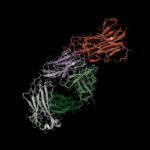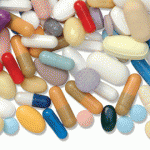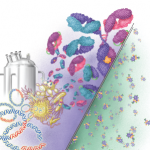As the costs of specialty drugs continue to rise and patient access to them becomes more challenging, physicians are increasingly called on to argue for treatments supported by medical evidence but difficult to access due to decisions outside their control. Medicine as big business is not new. However, the growing influence of pharmacy benefit managers (PBMs) highlights the clashing priorities between a profit-driven business model and a care-driven medical model.
Many PBM practices, including formulary construction, copay accumulators and non-medical switching, affect the cost of, and access to, specialty drugs and can have detrimental effects on patient care (see Table 1). Yet these decisions are made far from clinical settings, often without input from providers.
Rheumatologists are on the front lines of this conflict given the importance of specialty drugs, particularly biologic agents and biosimilars, in the treatment of rheumatic conditions and the administrative hoops providers have to jump through to prescribe these drugs for their patients.
“Rheumatologists understand very well that most of the medications we prescribe are going to be subject to prior authorization and step therapy,” says Angus Worthing, MD, a rheumatologist at Arthritis & Rheumatism Associates, Washington, D.C. “But I’m not sure everyone knows these things are mainly a profit scheme for PBMs and can increase the incentive to raise drug prices.”

Dr. Worthing
Dr. Worthing serves as vice president of the Alliance for Transparent & Affordable Prescriptions, a coalition of providers and patients that works to address PBMs’ impact on drug costs and patient access to affordable care. Understanding how PBMs negotiate drug prices and formulary access is critical, he says, given the impact these negotiations have on downstream practices, such as prior authorization and step therapy.

Dr. Gewanter
Unlike physicians, whose professional oath and duty are to make decisions in their patients’ best interest, a PBM has a fiduciary duty to the corporation it works for: “The first rule for any corporation is to make money for its shareholders,” says Harry L. Gewanter, MD, FAAP, MACR, clinical associate professor of pediatrics, Children’s Hospital of Richmond, Virginia Commonwealth University. “No matter what PBMs or payers say, any care patients get is a secondary side effect.” Dr. Gewanter works closely with the Biologics Prescribers Collaborative, an organization that promotes the safe use of both originator and biosimilar biologic medications.
A major problem with PBMs and insurers is the lack of transparency in negotiations regarding which drugs are placed on a formulary and which tier the medication is on. Dr. Gewanter underscores that the list price, or wholesale acquisitions price, used for negotiations with PBMs does not accurately reflect the net cost to PBMs after price concessions they receive in the form of rebates and discounts or the cost patients see. “Unlike medical charges, where patient copays are based on the negotiated net price, patients’ pharmacy copays are based on the list price—[not the PBM’s negotiated cost],” he says.
As more specialty drugs hit the market—especially biosimilars in the U.S.—rheumatologists will face increasing challenges related to the high cost of these drugs and the need for utilization management strategies to meet formulary requirements.
“We’re at a transition point in the U.S. between educating elected officials, patients and doctors about what PBMs are doing and starting to advocate for legislation and initiatives to bring more transparency to these practices to stop them,” Dr. Worthing says.
Active Advocates
In 2019, the ACR published a position statement on rheumatology drug pricing outlining the challenges posed by high costs of specialty drugs and medical industry practices by PBMs and other groups that make it difficult for patients to access and pay for drugs that improve their quality of life. Policies to rein in drug costs while maintaining or improving patient access to treatment—such as greater transparency of drug pricing and PBM practices and the implementation of guardrails for use of step therapy and prior authorization—are among the ACR’s top 2021 advocacy priorities and are a focus of the ACR’s federal and state-level activity.

Dr. Phillips
Chris Phillips, MD, a rheumatologist in Paducah, Ky., and chair of the ACR’s Insurance Subcommittee, says the ACR actively lobbies at the federal and state levels to address high drug costs and barriers to access, such as step therapy and medical restrictions. He worries, however, that the coming years will be even more difficult for patients, with cost pressures rising as PBMs more aggressively negotiate rebates with drug makers and manufacturers increase their list prices.
Biosimilars are an area of particular interest. As biosimilars for several specialty drugs become available in the U.S. in the next few years, drug companies negotiating for biosimilars may need to offer PBMs higher rebate bids to compete with biologics and, as a result, increase the cost of the drugs. “It really cuts the legs out from under biosimilars, given the reason for them is to provide a lower-cost option,” says Dr. Worthing.
Dr. Phillips thinks biosimilars will still be one way to control costs going forward, citing already significant drops in the cost of infliximab biosimilars since they entered the U.S. market.
“During the early phase of biosimilar approval, when there are biosimilars available for only certain biologics and as true cost differences appear, there may be increasing payer pressure to nonmedically switch patients [who are] stable on another biologic to whatever biologic or biosimilar [the insurer] can acquire for the lowest cost,” he says.
Another concern is switching patients who have achieved disease stability on their current biologic therapy. “We need more pharmacovigilance and real-world data so we can see switching patterns, as well as why people switch to a biosimilar from a biologic or other biosimilar, and what happens as a result of these switches,” says Dr. Gewanter.
Such data will have clinical relevance only if the drugs are placed on formulary. For now, PBMs appear to hold the stronger hand over providers. “Changing PBM practice could be a game-changer in the way that drug prices in the U.S. are set, especially for people taking specialty drugs for conditions like chronic autoimmune disease or cancer, and can change the outlook for cost and access to medications,” says Dr. Worthing.
Until and if such changes take place, Dr. Worthing says providers can continue to advocate for their patients by appealing denials of drug preauthorizations, alerting state insurance commissioners of PBM practices that are adversely affecting health decisions between provider and patient, and encouraging patients to advocate for themselves.
For more information on how PBMs work and advocacy efforts to change their practices, see https://atapadvocates.com/the-pbm-problem.
Mary Beth Nierengarten is a freelance medical journalist based in Minneapolis.
| Table 1: Practices by Pharmacy Benefit Managers (PBMs) | |
| Formulary Construction | PBMs basically enter into auction-style bidding with drug manufacturers and are incentivized to choose drugs with the highest rebates (or total price concessions) for favorable placement on formulary tiers.* The PBM pockets a portion of the rebate as profits, so higher rebates yield more profit. To remain competitive and offset the cost of the rebates, drug companies typically increase the list price of the drug. That increased price is passed on to the patient.
Drugs with a higher list price can push other drugs off a formulary or to a higher tier, resulting in patients being forced to switch therapies, adhere to step therapy protocols or make other changes. Frequent formulary changes make continuity of care challenging. |
| Nonmedical Switching | This occurs when a patient is switched from one medication to another for reasons other than efficacy, health or safety. |
| Copay Accumulator Programs | These programs limit drug manufacturer contributions to patients’ copays and out-of-pocket deductible expenses by disallowing the use of money from copay assistance programs toward these expenses. |
| White Bagging | Arrangements between a payer and selected pharmacies to have patients’ medications sent directly to the site of care. This practice can compromise patient safety and create clinical challenges when unpredictable changes occur, such as the need to adjust dosing, a medication not delivered in time for a patient’s appointment or a patient who can’t make it to an appointment. |
*Although “rebate” is commonly used to denote the price concessions that PBMs negotiate with drug manufacturers, it is just one component of the net price, which also includes other discount fees and defined terms. A more accurate term preferred by some is “total price concessions.”



